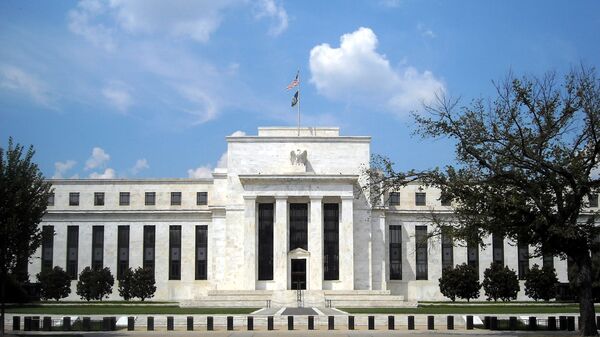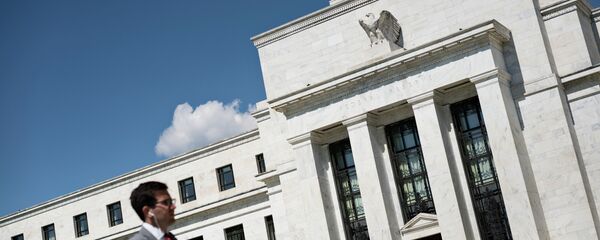Kristian Rouz — The US Federal Reserve could abandon the so-called yield curve, a key macroeconomic indicator which has been used to predict recessions for many decades. This comes as this indicator is pointing to a rapidly approaching recession, while other data suggest that an economic downturn is nowhere in sight.
The yield curve is a gap between the yields — or interest payments — on US government bonds and Treasury notes.
Yields on longer-term and shorter-term bonds vary. During an economic boom, investors pile into higher-yielding and riskier 2-year Treasuries, boosting their face value and suppressing the yield, while longer-term yields rise. The wider the gap — the healthier the economy, Fed policymakers would say.
READ MORE: Federal Reserve Helped US Top Banks to Avoid Stress Tests Failure — Reports
As recession nears, investors scramble to safeguard their assets, and buy longer-term bonds, which are more stable. Longer-term yields drop, while short-term yields go up due to higher market volatility. The yield curve gap is narrowing — and might even start to invert. According to conventional wisdom among economists, that's a sure sign of a recession.
However, not any longer. The yield curve has been very narrow since mid-2017, but Trumponomics appears to be working just fine.
This enigma has inspired Fed policymakers to start looking for a new methodology that could make recessions and other economic shocks more predictable.
"We are doing a lot of work to see what metrics are there to give us signals about weakness in the marketplace. I want to make sure we do all that we can not to miss something," Raphael Bostic, President of the Federal Reserve Bank of Atlanta, said.
According to the hard data, the US economy is confidently stretching its 10-year business cycle with a robust acceleration, as economic gowth settled at 2 percent year-on-year in the first quarter, while Q2 projections put it at roughly 4 percent.
READ MORE: US Branch of Deutsche Bank Fails Federal Reserve Stress Test
But some investors are expecting the yield curve to finally invert, with near-term bonds (2-year Treasuries) yielding more that longer-term ones (10-year notes) as soon as in the middle of next year.
This, according to Morgan Stanley analysts, is happening due to the enormous Fed holdings of the US government debt (some $4.37 trln). The bloated Fed balance sheet — which increased from $0.9 trln to $4.5 trln between 2008 and 2015 — has distorted bond market dynamics.
This, in turn, likely broke the yield curve as a reliable recession indicator.
"Investors are underestimating the size of the SOMA (the Fed's System Open Market Account) portfolio," Sam Elprince of Morgan Stanley's analytical team suggested in a recent report.
Now, the Fed is only able to reduce its bond portfolio at a slow and gradual pace — as a massive one-time dumping of trillions in government bonds could capsize both the banking sector and the federal budget. However, the central banking system needs accurate recession indicators for its everyday work. And if the old one is broken, you get a new one as a replacement.
What is the Fed going to do about it? A methodology change is most certain, but so far it is unclear what indicator, unrelated to the macroeconomic statistics, could be used as a proxy for near-term economic growth projections.
Fed analysts say yield curves between short-term bonds could be more accurate, as they don't take into account the longer-term bond indicators distorted by the Fed's holdings of US government debt.
Another option could be the discrepancy between yields on commercial bonds. However, in this case, private-sector volatility, such as company collapse due to corporate mismanagement, could be a nuisance.
Meanwhile, the gap between 10-year and 2-year Treasury yields was below 0.3 percent this week, which is less than on the eve of the Great Recession back in 2007. Some Fed economists take this seriously, although they can't quite explain what could throw the robust US economy into a sudden recession at this point.




